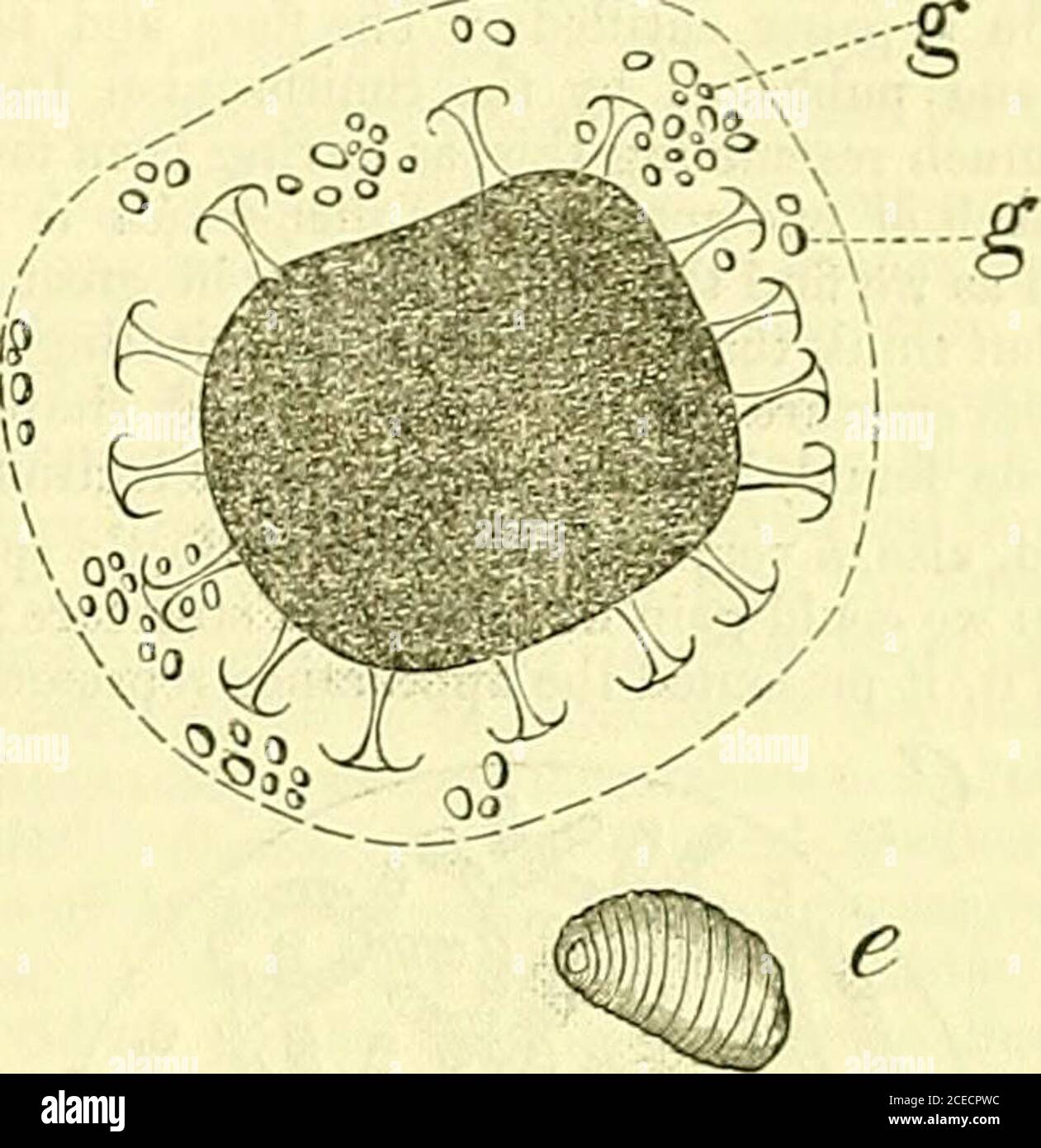. The Canadian journal ; a repertory of industry, science, and art ; and a record of the proceedings of the Canadian Institute. we see developed six hooks—three at either end; at c, thehooks appear to have attained their maximum developement.In examining the specimens by direct light, (as opaque objects),Vol. Ill, No. 9, April, 1855. the C3lls are seen to be continuous over the entire surface.The presence of cells ofFers no objection to the animality ofthese bodies, whilst the hooks remind one so forcibly of theovum of Cristatella mucedo, (a fresh water polype) as fi<mredby the late Sir J.

Image details
Contributor:
Reading Room 2020 / Alamy Stock PhotoImage ID:
2CECPWCFile size:
7.1 MB (264 KB Compressed download)Releases:
Model - no | Property - noDo I need a release?Dimensions:
1557 x 1605 px | 26.4 x 27.2 cm | 10.4 x 10.7 inches | 150dpiMore information:
This image is a public domain image, which means either that copyright has expired in the image or the copyright holder has waived their copyright. Alamy charges you a fee for access to the high resolution copy of the image.
This image could have imperfections as it’s either historical or reportage.
. The Canadian journal ; a repertory of industry, science, and art ; and a record of the proceedings of the Canadian Institute. we see developed six hooks—three at either end; at c, thehooks appear to have attained their maximum developement.In examining the specimens by direct light, (as opaque objects), Vol. Ill, No. 9, April, 1855. the C3lls are seen to be continuous over the entire surface.The presence of cells ofFers no objection to the animality ofthese bodies, whilst the hooks remind one so forcibly of theovum of Cristatella mucedo, (a fresh water polype) as fi<mredby the late Sir J. G. Dalyell, Bart., Raspail, Cornelius Varley, that it left little doubt these were the indubitable ova ofthe Plumatella, wh<m, presently, several of the mature bodiesappeared, their surface being more or less covered withcorpuscles of starch, as shewn at g. g. in c—this was at e. once conclusive of their vegetable character, and they neces-sarily resolve themselves intoa new species of Xanthidium. Anenlarged corpuscle of starch is shewn at c. As compared with all other known species of Xanthidia, these are remarkable for the possession of a membrane, ofinconceivable transparency and delicacy beyond the hooks, and, it is just possible that other species, if seen in a sufficientlyfresh state, would also present a membrane of like tenuity ;altogether, one cannot but regard these specimens as throwingmuch lio-ht on the true structure and affinities of such bodiesin general, whose history has been hitherto involved in muchobscurity. A